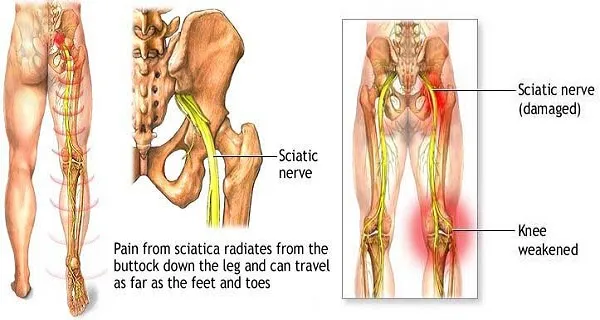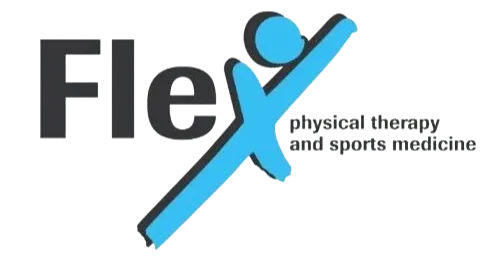There are many rumors around, concerning knee pain and its symptoms. How can we effectively separate facts from fluff? Read on to learn more!

1) All knee pain originates from the knee: this is not entirely true because knee pain can arise from other areas of the body, including the lower back, the hips, and more. The lower back can indeed spread pain through the lower limbs, often affecting areas like the knee, foot or even the calf, among others. Conversely, Injuries to the knee itself do not cause other body parts to ache. If you are having knee pain, but the knee itself is not tender to touch or there is no pain with active movement then the lower back or hip may be the source.
2) All meniscus tears need surgery: Believe it or not, surgery is not the sole answer, and it is not the only possible course of action to treat knee pain and meniscus tears. Most types of meniscus tears and related injuries can indeed be treated without the need for extreme measures such as surgery. Unlike “regular” bones, the meniscus is made at of cartilage and shaped like a disc, meaning that it is more flexible than regular bone matter. The purpose of the meniscus is to act as a sort of shock absorber, much like a cushion that reduces the pressure of impact and weight on the knee. We have to menisci in each of our knees, and when torn, they can irritate the joint causing pain.

- Meniscus tears are quite more common than you can imagine, as they can be caused by multiple factors, including trauma, accidents, sports injuries, and even degeneration. Many recent research studies have shown that the outcomes with non-surgical treatment of meniscus tears are the same and surgical treatment. And in many cases, surgery to fix a torn meniscus can actually make the knee pain worse especially if there is any underlying knee arthritis. The only time surgical intervention would be necessary is if the torn meniscus has created a “locked” joint and keeping the knee from being able to bend or straighten.

3) Don’t do any exercise and rest until the pain goes away if you have knee pain: some people believe that performing exercises and undergoing physical therapy might slow down the recovery process, thinking instead that rest and inactivity is the best way to treat knee pain. While rest could be an important component of the recovery process, physical activity and exercise, if performed safely and correctly, can increase your recovery and prevent/reduce knee pain.
4) Over-the-counter NSAIDs are the best treatment for knee pain: some people advocate the use of over-the-counter NSAIDs, claiming that these meds are the absolute best alternative for those seeking relief from knee pain. On the other hand, anti-inflammatory pain medications don’t heal pain; they just block you from experiencing it. Long-term use of pain relief meds can indeed have a wide variety of very harmful side effects, such as dramatically increasing the risk of heart attacks and strokes for the users. For this reason, many people who suffer from chronic pain choose to give up on medications to avoid such alarming risks.

5) Surgery is the only long-term solution to knee pain: some people are strictly convinced that full and total recovery from knee pain and related issues can only be attained with surgery. In reality, there are many other viable solutions, which are less invasive and equally (if not more) effective in the long run. Physical therapy comes to mind, as it can help reduce pain, and increase the speed of the recovery process exponentially.
6) Knee pain is just a part of growing old: some people are convinced that knee pain and similar issues simply “happen” as a person ages. The truth is, that aging has nothing to do with knee pain itself. As people get older, especially when they approach their late middle age, they might start experiencing issues related to their lifestyle. Excessive weight, for example, is a common issue for middle-aged people throughout the western world, and it can contribute to a lot of problems that affect bones and muscles.

7) All ligament tears require surgery: much like mentioned earlier on, some people think that all ligament tears can only be cured through surgical intervention. On the other hand, surgery is not the only effective way to treat ligament tears. Physical therapy can also provide a wide range of fantastic benefits. It has the potential of speeding up recovery times, since therapy can help you build strength and agility in the aftermath of a debilitating injury. Proper physical therapy can also offer additional pain relief while accelerating the healing of the ligament through increasing blood flow to the injured ligament. The best course of action will ultimately depend on your particular case, as not all injuries are treated equally!

8) Physical Therapy does not help: some people are strangely adverse to physical therapy, questioning its merits and effectiveness. However, mainstream science has often contributed evidence that physical therapy can indeed offer relief from knee pain and other musculoskeletal issues that might affect an individual. Following an injury, it might seem quite natural to feel like you shouldn’t get out of bed for quite a while, even though physical therapy can help you gain more strength and improve your mobility, to speed up the road to recovery.
In addition to significantly increasing the speed of the recovery process, physical therapy can reduce the pain/swelling and increased blood flow to the joint.
If you are someone you know is suffering from knee pain. Give a call at (800) 930-8803 to set a Free Discovery Visit with one of our knee pain specialists or sign up here for your Free Discovery Visit now.


